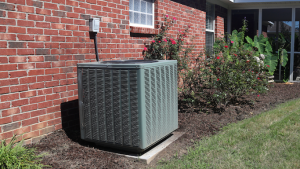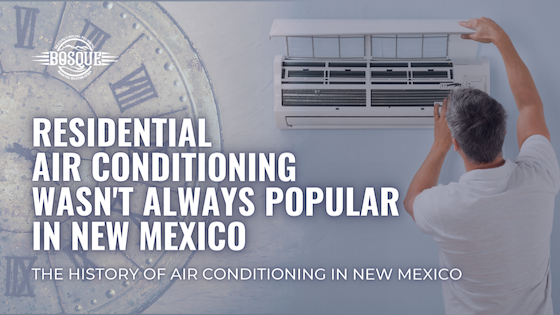Residential Air Conditioning Wasn’t Always Popular in New Mexico
Now we’re used to air conditioning everywhere we go, but you may remember a time when that wasn’t the case. You may even still live in a home that’s relying on other cooling methods besides air conditioning.
New Mexico has a unique relationship to cooling because of our connection to the swamp cooler, or evaporative cooling, which was invented in the Southwest and made popular here because of our dry climate.
So in this blog, we’re looking at the history of air conditioning but taking a closer look at what cooling has looked like specifically in New Mexico over the years. We’ll even take a look at how the Pueblo Indians cooled their homes.
A Brief History of Air Conditioning

As long as there have been humans and heat, we’ve always looked for ways to cool ourselves down. Thankfully with our modern technology, we don’t have to think twice about being cool on a hot day (unless your AC is broken, in which case you need to call us at Bosque Heating, Cooling & Plumbing!)
Take a little journey with us to learn how we got to where we are today with air conditioning.
Where It All Started
Evaporative cooling is perhaps one of the older forms of cooling, with examples dating all the way back to the Ancient Egyptians.
By harnessing the cooling power of water, they would use water and breeze to create a cooling effect. According to How Stuff Works,
“The ancient Egyptians had a great need for air conditioning. They accomplished it by hanging wet blankets across the doors of their homes or, if they happened to be royalty, having servants fan them across jugs of water. When hot dry air passes over water (or better yet, through it), the air cools off.”
Ancestral Puebloans, Pit Houses, and Kivas
On the other side of the world, Ancestral Puebloans had come up with another inventive way of keeping cool during the summer and warm during the winter. By digging homes and structures into the ground, they received the benefits of the insulation the dirt provided.
These structures were called pit houses and were constructed with wood and mud. Pit houses were likely the inspiration of kivas, the ceremonial subterranean structures, complete with a ventilation system that are still used today by modern Puebloans.
Important Figures in the History of Air Conditioners
Let’s skip forward several hundred years to the beginning on our modern air conditioning systems. By listing a few of the important figures in the history of air conditioning, you’ll see how the technology evolved over time.
- 1851—Dr. John Giorre. Dr. Giorre created an ice making machine with a compressor powered by either a horse, water, or wind.
- 1902—Willis Carrier. Willis Carrier invented an electrical air conditioning system with the goal of solving a humidity problem that was making pages wrinkly at a publishing company.
- 1906—Stuart W. Cramer. Cramer coined the term “air conditioning” referring to his method for dehumidifying his textile mill.
- 1922—Carrier (again). Carrier invented a centrifugal compressor that made larger scale air conditioning more affordable and therefore, more widely used, and the idea of comfort cooling became mainstream.
- 1928—Thomas Midgley Jr., Albert Henne, and Robert McNary. General Motors engineers create chlorofluorocarbons, a non-flammable refrigerant that could be used in air conditioners. This technology made them much safer than the previous used flammable refrigerants (despite our later understanding of the effect of CFCs on climate change.)
- 1929-1931—Frank Faust. Improving on past designs, Faust and General Electric develop 32 prototypes for self-contained room coolers.
- 1931—H.H. Schultz and J.Q. Sherman. These inventors patented a window unit air conditioner but it wasn’t widely adopted because of its cost.
- 1947—Henry Galson. Galson develops a more compact, less expensive window unit air conditioner which takes off in popularity.
When Was Air Conditioning Invented?
Air conditioners as we know it developed over the early decades of the 1900s, but if you wanted to put a date on it, Carrier’s invention of the centrifugal compressor technology in 1922 was probably the most pivotal turning point. The Carrier Air Conditioning Company continued to be a hub of much of the progress in air conditioning.
Of course, for several decades after that, the technology was too large, too heavy, and too expensive for residential air conditioning. But with the developments over the following decades, by the late 1960s, most new homes had central air conditioning, according to energy.gov.
Modern Progress in air conditioning
Beginning in the early 1990s, we’ve seen the phase out of chlorofluorocarbons (refrigerants from early cooling) in favor of more environmentally friendly refrigerants.
And, in the 2000s, we’ve seen the implementation of energy efficiency standards and a much broader desire of consumers to have energy efficiency in their home appliances .
Unique Cooling Systems to New Mexico and the Southwest
 In New Mexico, we know another cooling story though. Alongside the development of central air conditioning, people in the American Southwest developed their own cooling technology to meet their unique cooling needs.
In New Mexico, we know another cooling story though. Alongside the development of central air conditioning, people in the American Southwest developed their own cooling technology to meet their unique cooling needs.
Unlike the initial air conditioner inventors who were specifically trying to dehumidify commercial settings (like the publishing house and textile mill we mentioned before), people in the Southwest certainly didn’t need to dry out the air.
Their cooling methods were going to lean more towards the evaporative methods of the Ancient Egyptians, bringing more moisture to the air.
Evaporative Coolers/Swamp Coolers
Modern evaporative coolers took the evaporative technology ancient peoples had figured out, and paired that with electricity in the swamp cooler. But as we’ve mentioned, people have understood that cool air comes from evaporating water for centuries.
New Mexico’s History of Cooling and Colonizers
Spanish conquistadors and other settlers were using evaporative cooling in the form of ollas. The Spaniards would drape a weaving of grass or cactus fibers over clay jars of water (ollas) to put moisture in the air, bringing a cool sensation.
Later inhabitants of the southwest would drape wet burlap in doorways or place ollas in windows or doorways for added cooling.
When were swamp coolers invented?
In 1908, Oscar Palmer built the first drip type evaporative cooler in Arizona, and in the next few decades, thousands of homemade coolers were created in Arizona.
Several professors at the University of Arizona passed around copies of how to make your own evaporative cooler and the technology spread rapidly.
By 1936, there were several swamp cooler manufacturers in Phoenix and the Southwest. There were a variety of patents, but the designs all featured pads that absorbed water from a water reservoir and bringing that water in contact with moving air, allowing evaporation to occur.
Swamp coolers dominated over the earlier air conditioning systems because they brought humidity to the air, whereas air conditioners, by design, took moisture out of the air.
Where do swamp coolers work best in New Mexico?
Now, many homes in New Mexico and the Southwest have switched over to air conditioning and new homes are certainly built with central air conditioners. Older homes without ducting are the homes where you’ll typically still find evaporative coolers.
Swamp coolers continue to work best in older homes that don’t have ductwork built in, and don’t have a good space to put ductwork even if the homeowner wanted to.
Do evaporative coolers work well in Albuquerque?
Yes, swamp coolers do work well in Albuquerque, and any arid climate than more so than humid climates. In fact, they simply aren’t used in humid climates because they don’t work there.
But, while folks did like the humidity that swamp coolers brought to a home, they do have their limitations, only cooling a home to about 20 degrees below the outside temperature. So, as air conditioning technology progressed and exceeded swamp coolers, many people opted for air conditioning, despite the drying effect.
HVAC companies can now install whole-home humidifiers to infuse moisture into the air in a home to combat the dryness and create more comfort.
Other benefits of swamp coolers
There are other benefits to using a swamp cooler too. So even though your home might not be as cool if you have refrigerated air, they’re cheaper to install, cheaper to operate, and as we’ve mentioned, provide homeowners relief from New Mexico’s dry desert air.
It really comes down to personal preference. As an Albuquerque HVAC company, we see both, and we install and repair both.
For many homes with a swamp cooler, it comes down to if a swamp cooler conversion is in the budget, and if their home’s infrastructure can support the conversion because most people do find refrigerated air to be superior.
But, there will always be those diehard swamp cooler enthusiasts. And maybe that’s because of its roots here in the Southwest.
New Mexico Has It’s Own Air Conditioning History
 While air conditioning and swamp coolers developed somewhat side by side on a timeline, swamp coolers and evaporative cooling seems to be a part of HVAC history unique to the American Southwest.
While air conditioning and swamp coolers developed somewhat side by side on a timeline, swamp coolers and evaporative cooling seems to be a part of HVAC history unique to the American Southwest.
In fact, people in other parts of the country might not even know what you were talking about if you mentioned swamp coolers or evaporative coolers.
However, it’s a timeless innovation based on physics that was developed from its earlier forms, right next door in Arizona and widely adopted here in New Mexico.
Whether you’re looking to repair or replace a swamp cooler, switch to an air conditioner, or repair or replace your air conditioner, Bosque Heating, Cooling & Plumbing does it all. Our techs will help you compare your options so you can pick the cooling system that’s right for your home and budget. Give us a call at (505)444-7200 today.


